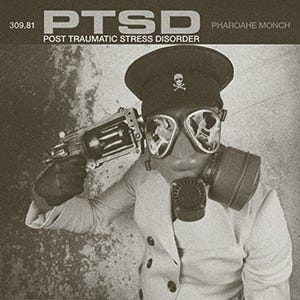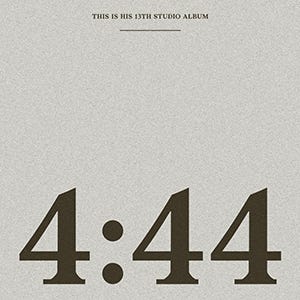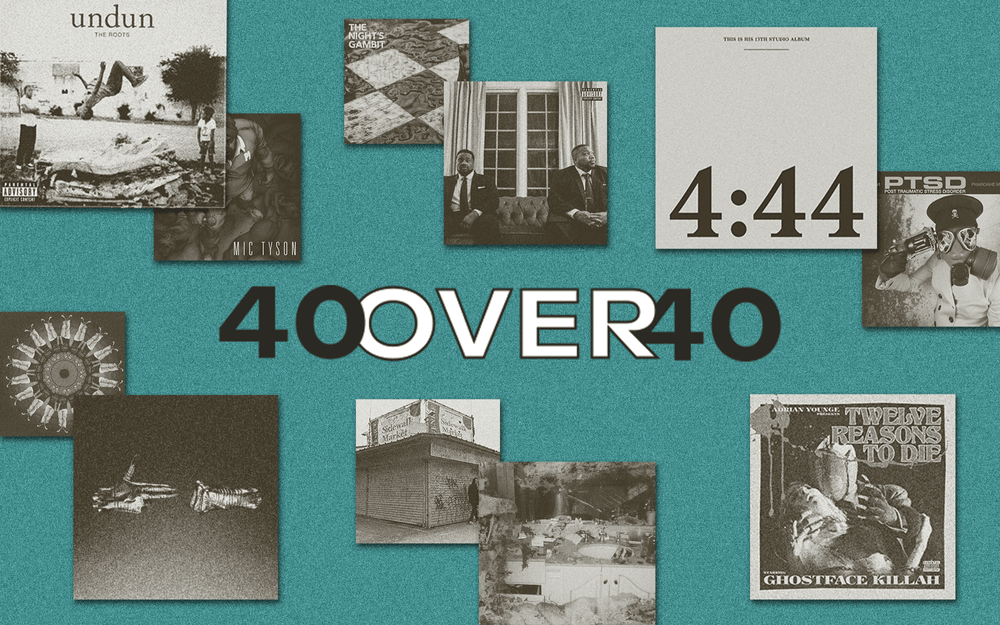Summer 1977: The art of emceeing begins. Among the first triumvirate of greats — Grandmaster Caz, Grandmaster Melle Mel, and Kool Moe Dee — the average age is just under 16 years old.
Summer 1986: The first golden era spins up, and with it a new triumvirate of greats in Rakim, Kool G Rap, and Big Daddy Kane. They, too, average out to less than 18 years old. Kurtis Blow, the undisputed king of the early ’80s, is on his way out — and he’s barely past 25. In a youth culture like hip-hop, the idea of a 30-year-old rapper doesn’t seem feasible.
Summer 2020: Oh, how things have changed.
In his book Outliers, Malcolm Gladwell theorized that it takes at least 10,000 hours of deliberate practice to truly master one’s craft. As time went on, more and more veteran rappers leveraged those countless hours of practice not just to create quality music, but to stay relevant to mainstream audiences. Stigmas began to dissipate. By the time the 2010s rolled around, a 40-year-old rapper wasn’t just a possibility; it was a promise.
Read more: Who’s Having the Best Rap Career After 40?
Over the following decade, change kept coming. Hip-hop itself turned 40; Paul Iannacchino’s 2015 documentary Adult Rappers documented the rise of the grown-ass emcee; rappers like Jay-Z and E-40 turned 50, and continued making relevant, compelling music. By now, any ceiling has been long destroyed — and all that’s left to do is enjoy the results. In chronological order, of course.(Disclaimer: If it were solely up to me, this list would include every single Bumpy Knuckles release past 2009.)

The Roots, Undun (2011)
The Roots’ 10th studio LP was their most ambitious project to date, a concept album chronicling the life and death of fictional character Redford Stevens — and told in reverse order. While the album initially grew out of an idea by the band’s late manager Richard Nichols, it became a reality due to Questlove and Black Thought’s two decades’ worth of chemistry. That both of them had turned 40 on the year is a happy coincidence; that Undun reflects a lifetime of honed skills isn’t.

Sean Price, Mic Tyson (2012)
Price’s first post-40 album, Mic Tyson came on the heels of underground classics Monkey Barz and Jesus Price Supastar. Maybe not right on their heels — the Brooklyn emcee took his time recording and finalizing the LP, releasing it five years after Supastar. The first act of his career had been spent as Ruck, half of Heltah Skeltah; now, under his government name, his working-class persona was well honed, and Mic Tyson hit just as hard (and was as eminently quotable) as its pugilist namesake. Shawn Carter is nice but Sean Price was the best.

Large Professor, Professor @ Large (2012)
A protégé of the legendary producer/engineer Paul C, rapper/producer Large Professor was involved with producing three classic albums before he even turned 20: Eric B. & Rakim’s Let The Rhythm Hit ’Em; Kool G Rap & DJ Polo’s Wanted: Dead Or Alive; and his own group Main Source’s Breaking Atoms. Some professors might retire into an honorary position after 20 years, but on Professor @ Large, selections like “Focused Up” and “Light Years” showed everyone that Extra P still had tenure — on the boards and on the mic.

Ka, The Night’s Gambit (2013)
When you think of emcees who embody what a post-2010 classic rap album sounds like, Ka’s name immediately springs to mind. The Brownsville rapper (and firefighter) followed up his 2012 album Grief Pedigree with an extended chess metaphor about a pawn attempting to ascend to king by navigating the Brooklyn streets. Unrelentingly vivid imagery makes this feel like an audiographic novel; you’re right there with him, seeing the world through his eyes.

Ghostface Killah, Twelve Reasons to Die (2013)
Tony Stark singlehandedly brought the Wu back to prominence with his classic 2000 album Supreme Clientele; in 2013, he returned with a concept album based around a resurrected man who came back to life to get revenge on the mafiosos who conspired to have him murdered. While it came out on RZA’s label Soul Temple — and even included a comic book that further immersed the listener into the album’s backstory — Ghostface sounded so at home rhyming over producer/arranger Adrian Younge’s orchestration that he went on to make more projects rhyming over live instrumentation from bands. Wu-Tang forever, indeed.

Cormega, Mega Philosophy (2014)
The Queensbridge rapper first appeared on wax in 1989, on DJ Hot Day’s album It’s My Turn, but despite a Def Jam deal that went nowhere, he only got better over time. Twenty-five years after his debut appearance, Cormega released this embarrassment of riches, an assemblance of inside-the-industry jewels and insights born of his lived experiences. The single “Industry” became one of the songs of 2014, and this album cemented that Cormega was still capable of making music that moved the crowd while making them think.

Pharoahe Monch, PTSD (2014)
Few emcees command the respect that Pharaohe Monch does as a lyricist, and for good reason; after beginning his career as half of Organized Konfusion, he went on to a string of celebrated solo releases. And if there was ever the thought that emcees lost a step when they reached the other side of 40, this album completely shattered that erroneous assumption. Not only is it a concept album, but it’s a sequel: PTSD details its protagonist coping with aftereffects of surviving the traumatic events detailed in Monch’s previous album, W.A.R (We Are Renegades). Quite frankly, it’s hard to imagine an artist who didn’t have 20 years of creative world-building in their repertoire executing a project like this.

Dr. Dre, Compton (2015)
Fun fact: I had to keep it a secret that I knew this was coming. I wrote the liner notes for an album on House Shoes’ label, Street Corner Music. When I sent in my final copy, Shoes informed me that I needed to remove a reference to a beat title because it had been bought by Dr. Dre. Not surprisingly, the Doctor put it to good use; Compton, which was released in tandem with the N.W.A. biopic Straight Outta Compton, may not have been the mythical Detox, but it was pretty damn good.

El-P & Killer Mike, Run the Jewels 3 (2016)
After El-P produced Mike’s R.A.P. Music back in 2013, the two realized that their chemistry would work as a rap duo; the rest is abrasive agitprop history. And their third project together found them not just in their forties, but working together more seamlessly than they ever had. This album was released on Christmas Eve 2016 — a fitting day, given that it was about three weeks earlier than expected. And with joints like “Hey Kids (Bumaye),” needless to say that it was a happy holiday for everyone. Except fascists.

De La Soul, And The Anonymous Nobody… (2016)
After more than 25 years of releasing albums, De La Soul left Tommy Boy and Sanctuary Music, and decided to rely on their fan base to crowdfund their next album. Fan support for the ensuing Kickstarter campaign was overwhelming: The group reached its seemingly lofty goal of $110,000 in less than 10 hours, and by the time the campaign was done, more than 11,000 people had donated over $600,000 in total. And the final product was worth every penny. Tracks like “Royalty Capes,” “Pain,” “Trainwreck,” and “Whoodeeni” reminded people De La has the best back catalog in rap history — and collaborations with everyone from Jill Scott to David Byrne reminded listeners of their versatility. Three used to be the magic number; now 40 is.

A Tribe Called Quest, We Got It From Here… (2016)
I remember Jarobi telling me this album was being made; among an inner circle of mutual friends, associates, representatives, and members of Tribe, it was imperative to keep the process under wraps. The album and its title took on even more of a meaning when Phife Dawg passed away during the recording process. By the time the album was completed, it had turned into a celebration of the life and accomplishments of this group of friends, and the bonds they had with each other — and their fans. I still get goosebumps listening to these songs, and it’s hard to make it all the way through the video for “The Space Program” without fighting back tears. Thank you for your service, Questers.

Jay-Z, 4:44 (2017)
It’s crazy to think Jay-Z would need a “comeback” album, or one that represented his growth as a person and an artist at this stage of his life, but here we are. As well known as he was, Hova managed to maintain a level of mystique, rarely revealing any details about his life, so being as open and vulnerable as he was on 4:44 — on everything from fidelity to parenting anxiety, made it a cultural moment that transcended a mere album release. It’s little wonder he’s got the top spot on LEVEL’s inaugural 40 Over 40 list.

Pusha T, Daytona (2018)
When Kanye West relocated to Wyoming, he immediately began working on a series of short albums by his G.O.O.D. Music artists and associates alike — but fans were really only waiting on King Push. Thankfully, Daytona represented the best of these efforts. From the controversial album art (a picture of Whitney Houston’s bathroom mirror and sink, littered with drug paraphernalia) to hard bars about hard white over hard beats, Pusha Ton’s command of the English language earned this jawn a place on this list.

Roc Marciano, Behold a Dark Horse (2018)
After some early incarnations (a member of Busta Rhymes’ Flipmode Squad, an apprentice of Pete Rock’s), Roc pioneered the classic rap wave of the 2010s alongside fellow veteran emcee Ka. Somehow, he released three albums in 2018 alone — but this dark, relentless assault of bars and beats stands alone. When you get guest appearances from Black Thought and Busta Rhymes, you know you’ve got something special, and Roc Marciano always does.

Masta Ace x Marco Polo, A Breukelen Story (2018)
Masta Ace was arguably the first active emcee to master grown-man rap — but even after having a grip of albums on his résumé, he released one of his best albums in a highly competitive year. From the opening track, “Kings,” it’s immediately apparent what you’re in for; after the Smif-N-Wessun-guested “Brooklyn,” you realize there won’t be any letdown coming any time soon; by the time you’re making that ugly face listening to closer “The Fight Song” featuring Pharoahe Monch, you know you just heard a goddamn modern classic. Ace never disappoints.

Evidence, Weather Or Not (2018)
Over a span of 15 years, the guy who always raps about the weather has released five albums with his celebrated group Dilated Peoples, several solo EPs and albums, and an album as Step Brothers alongside his longtime friend Alchemist. That being said, Weather Or Not came from another place entirely: The album was recorded while he was dealing with his girlfriend Wendy’s stage 3 breast cancer diagnosis shortly after the birth of their son Enzo. The result is raw, cathartic, and undeniably enduring. Sadly, Wendy lost her battle, but this album remains a testament that great art can be made during times of great distress.

Royce da 5'9", Book Of Ryan (2018)
Royce has been on an absolute tear as of late, and amid an incredible run of solo and group projects, Book Of Ryan found the Detroit emcee being more open, introspective, and personal than he’d ever been on previous albums. A longtime battle with alcohol and substance abuse had already led to him becoming sober, but his level of vulnerability was new. Turning 40 was unquestionably a major factor in disclosing so much on this album — but regardless of why, the end result was yet another masterpiece.

Czarface, Czarface Meets Ghostface (2019)
Boston duo 7L & Esoteric first linked with Inspectah Deck to record “Speaking Real Words” back in 1999 for their EP of the same name. Twenty years later they’ve recorded multiple albums with the Rebel INS under the name Czarface — but this time, the Three Man Tag Team Champions face off against Starkey Love himself. At 12 tracks and 40 minutes, the result is a high-replay sequence careening from the opening bell on “Back At Ringside” to “Face Off.” Inspectah Deck is still the best leadoff man since Rickey Henderson; Ghostface’s delivery is still timelier than the Amazon Prime van; Czarface is still up there with Run the Jewels at the top of the grown-man rap crews.

Little Brother, May the Lord Watch (2019)
Yet another secret album I had to keep quiet about during the recording process. Phonte and Rapper Big Pooh were both pursuing their own endeavors and having successful solo careers, but by the time Phonte’s 2018 album No News Is Good News and Big Pooh’s album RPM had come out, enough time had passed since Little Brother’s dissolution that they could build a friendship again — a healing that Phife Dawg’s tragic death helped catalyze. The rest happened organically; the result is something that could only have been made by two cats who have been through the wringer and back.

Jay Electronica, A Written Testimony (2020)
Describing this album as “highly anticipated” is an understatement; I remember posting videos more than a decade ago of Jay Electronica in the studio working on Patents Of Nobility. But this is no reheated leftovers; the album was recorded in 40 days, with assistance from Jay-Z and Young Guru on the boards engineering and mixing. When the Phantom of the Chakras initially announced his Roc Nation signing he had just turned 34; at the time of the album’s completion, Jay Electronica was 43. Better late than never.
